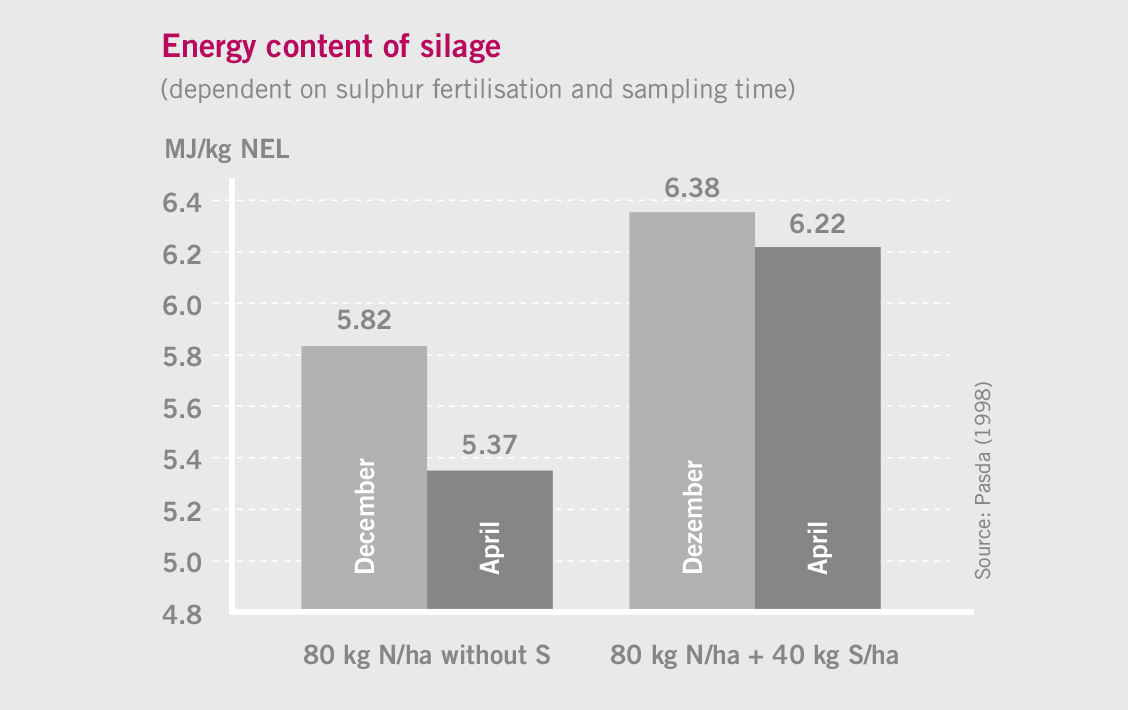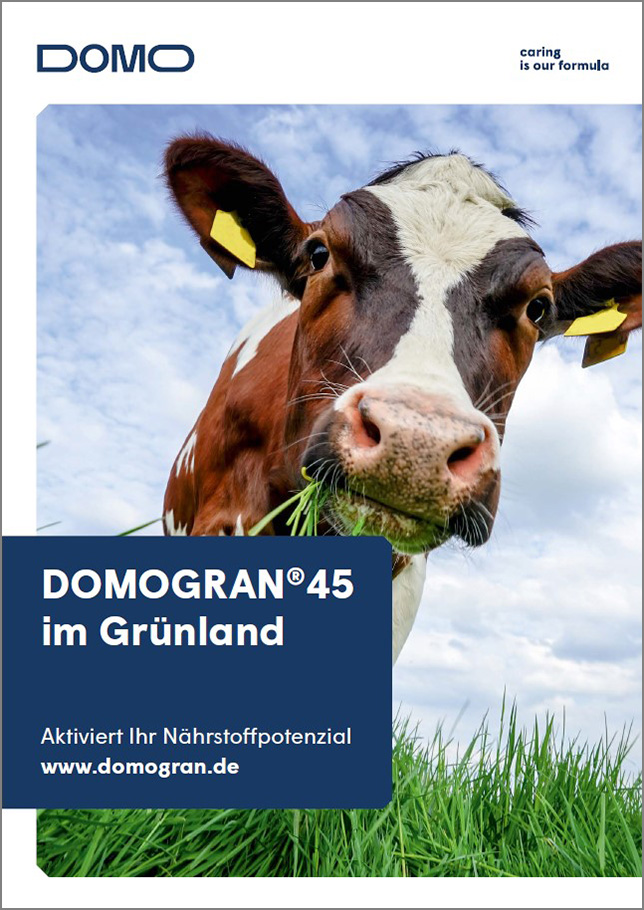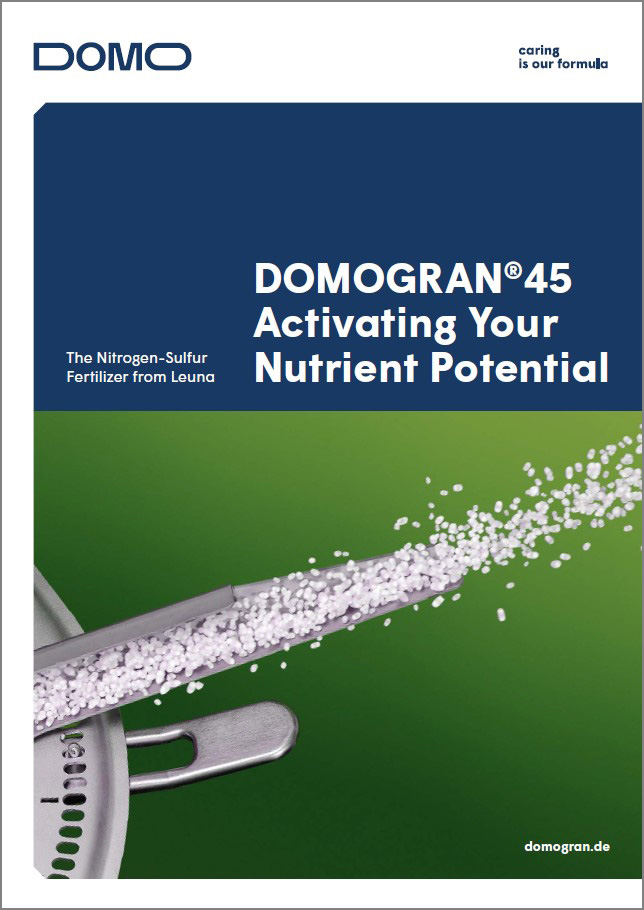Harness the full yield potential of your grassland – DOMOGRAN® ammonium sulphate fertiliser
A coarse crystalline ammonium sulphate fertiliser, DOMOGRAN® is especially suited to grassland as a supplement to organic manure. Using DOMOGRAN® will enable you to achieve optimum forage values thanks to its slow-release nitrogen and 24% sulphur content. DOMOGRAN® provides your grassland with sulphur sulphate and ensures stable levels of ammonium, so that you can guarantee your crop has a balanced composition. This means the silage you produce is appetising and has a high mineral content. In addition, you reduce the level of nitrate and benefit from increased energy and protein levels in your grassland. As well as producing excellent feed quality, DOMOGRAN® also helps to utilise your maximum yield potential.
Benefits and effects of ammonium sulphate as a grassland fertiliser
Punctual acidification promotes sod grass
DOMOGRAN® punctually reduces the pH value of the soil area around the fertiliser pellet. This characteristic promotes the growth of sod grass and contributes to a grass-rich and therefore high-quality grassland crop. The biodiversity of the crop is increased, with a higher proportion of white clover in particular.
More flexible mowing time frames mean higher quality silage
Increased biodiversity slows down the ageing of the crop. This extends the time frame for choosing the perfect cutting time. It also means more flexibility for you when mowing and reduces the risk of having to cut and store silage during bad weather. DOMOGRAN® gives you more time, helps you to avoid work peaks and promotes higher silage quality with increased energy content.
Sulphur and nitrogen: An unbeatable combination
DOMOGRAN® provides ammonium nitrogen and sulphur sulphate. When these two ingredients are provided from the beginning, they have a strong influence on the growth and quality of grasses, herbs and legumes. Used as a nutrient, ammonium reduces the nitrate content of forage, which indirectly improves animal health. In addition, when made available to plants, sulphur promotes high energy levels in feed, which also remains stable when longer stored. Higher protein content from sulphur sulphate, reduced raw fibre content and an altogether higher yield are the additional benefits that you can achieve by using DOMOGRAN® on grassland.
High-quality grassland crop
Practical tips for applying DOMOGRAN® as a grassland fertiliser
Application in combination with organic fertilisers
In combination for example with livestock manure, ammonium sulphate fertiliser can be applied before the first and second cuts with excellent results. The dosage of DOMOGRAN® will depend on the cutting frequency throughout the year. Generally, the recommended dosage is between 50 and 400 kg/hectare.
Application without additional farm fertiliser
If no other farm fertilisers are applied, you can increase the dosage amount of ammonium sulphate. As a starter fertiliser, spreading is recommended before the first cut and the second cut (if applicable). Depending on the cutting frequency throughout the year, the recommended spreading amount is 300 - 900 kg/hectare.
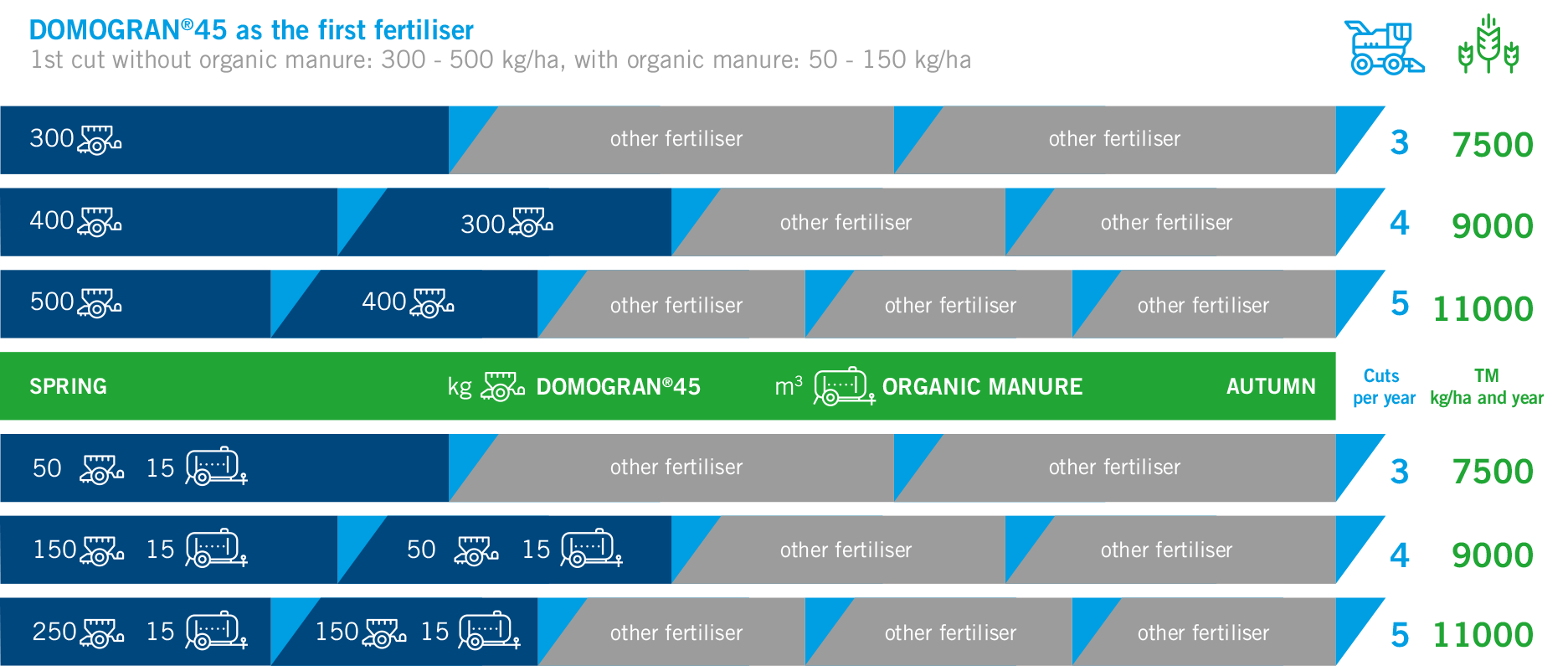
Did you know? Constantly evolving grassland
From unregulated use to pastureland
Grassland farming continues to be an important source of revenue in Europe. It all started around 8,000 years ago with the emergence of unregulated ley farming and agroforestry. Areas of land that had lost profitability after years of agricultural use were slashed and burnt, and subsequently used as ‘wild meadows’ by the local population for their domesticated animals. This system continued for thousands of years until increased population sizes and the widening expanses of seeded agricultural land made regulated forms of cultivation necessary. This is also how common pasture farming came about, making it mandatory for villagers to put their animals into the custody of a shepherd in order to avoid unregulated usage of the available meadows.
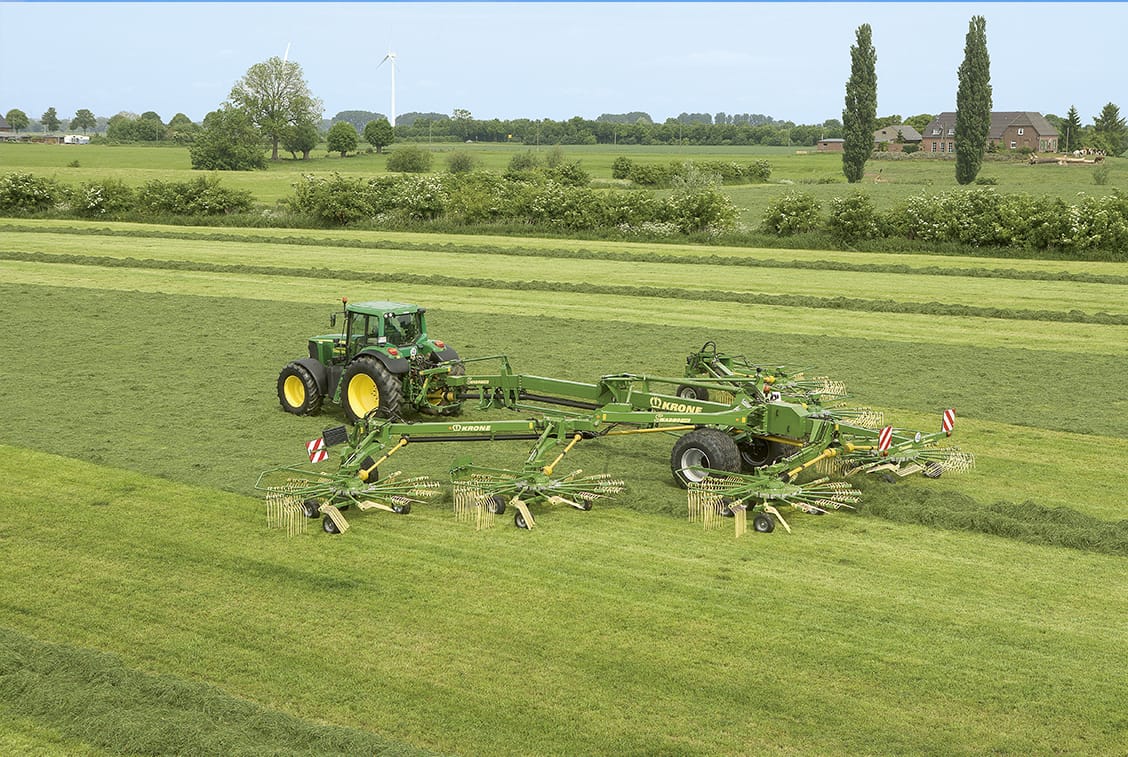
Economic optimisation
Progressive developments in agriculture and the availability of industrial fertilisers from the 19th Century onwards gave grassland usage a further boost. To this day, the proportion of grass grown on cultivated land – as well as its usage – remains somewhat varied per region, which has contributed to countless other factors. Geographic requirements, political decisions and economic interests are just some of the factors that have been influenced.
Potential lies in biodiversity
The biodiversity of grassland is influenced by how it is used. Pastures and meadows that are used intensively and cut three to six times per year produce on average 15 to 20 different plant varieties within a reference range of 25 qm. Extensively used grassland areas can expect double the amount. Many varieties such as ribwort, red fescue, smooth meadow and white Dutch clover are extremely valuable as fodder. Others, such as rushes and daisies, do not have much worth as green fodder, yet they still contribute to biodiversity.




